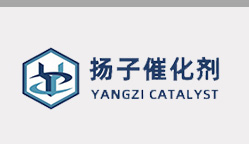
PRODUCTS

PRODUCTS

(Vanadium-free) low temperature denitration catalyst
| Product characteristics | Low-temperature denitration catalyst is a new generation of medium-temperature denitrification catalyst produced by advanced preparation methods with active TiO2 as the carrier, rare earth elements and transition metal tungsten nickel as active components. main feature: ○The active component of the catalyst is rare earth, which is environmentally friendly; there is no need for hazardous waste treatment after failure to ensure environmental safety; ○Ammonia storage function to reduce ammonia escape; the ability to synergistically remove CO, HC, and Hg; ○SO2/SO3 conversion rate <0.4%, strong anti-poisoning ability; after inactivation, it can be regenerated and used, reducing operating costs; ○It can be regenerated after being poisoned. |
|||||||||||||||||||||||||||||||||||||||||||||||||||||||||||||||||||||||||||
| Properties | Table 1 Physical and chemical performance requirements
|
|||||||||||||||||||||||||||||||||||||||||||||||||||||||||||||||||||||||||||
| Application | Widely used in chemical/petrochemical, glass/ceramics, steel/coking, cement/paper, garbage incineration, stainless steel pickling, oxalic acid production line, nitric acid production line, ships/automobiles, industrial boilers (kilns), and other industrial enterprises. | |||||||||||||||||||||||||||||||||||||||||||||||||||||||||||||||||||||||||||
| Packing | According to the original design and actual situation, large-scale module packaging is made. The two sides of the module are open and the catalyst unit is exposed to the air. Therefore, the module should be protected from rain and other moisture. The module box should be completely wrapped in plastic film, sealed with tape, and then firmly tied to a wooden pallet. |
|||||||||||||||||||||||||||||||||||||||||||||||||||||||||||||||||||||||||||
| Storage & Notes | The honeycomb type denitration catalyst module is transported in the horizontal direction and installed in the vertical direction in the reactor. The modules stored on the transport pallet must be well packed and the plastic film on the outside must not be removed. However, the plastic film can only protect the catalyst from moisture in a short period of time. When the catalyst module is temporarily placed outdoors, it should be covered with a suitable polyethylene film or tarpaulin. Modules should be stored indoors to avoid being wet from rain, and avoid contact with oil products and other damaging chemicals. The module should be kept as dry as possible. If a dry state can be ensured in the catalyst package, the catalyst module can be stored in a container or temporary warehouse on the construction site. The number of stacked layers of catalyst modules cannot exceed two, and the modules must be stored on a stable and flat ground. |
|||||||||||||||||||||||||||||||||||||||||||||||||||||||||||||||||||||||||||
| Product Image | .jpg) |
|||||||||||||||||||||||||||||||||||||||||||||||||||||||||||||||||||||||||||

CONTACT US
Address: No. 66 Planning Road, Fine chemicals Park, Yonganzhou Town, Gaogang District, Taizhou, Jiangsu
Taizhou head office: Deng Yuning +86-13927634611
Shao Xueliang +86-13415255065
E-mail: yzchj.jiangsu@vitalchem.com
Tel: +86-523-86927818 Fax: +86-523-86927818

ORDER
Copyright(C)2020, Jiangsu Yangzi Catalyst Co., Ltd. All Rights Reserved. Supported by ChinaChemNet ChemNet Toocle Copyright Notice 备案序号:苏ICP备05012726号